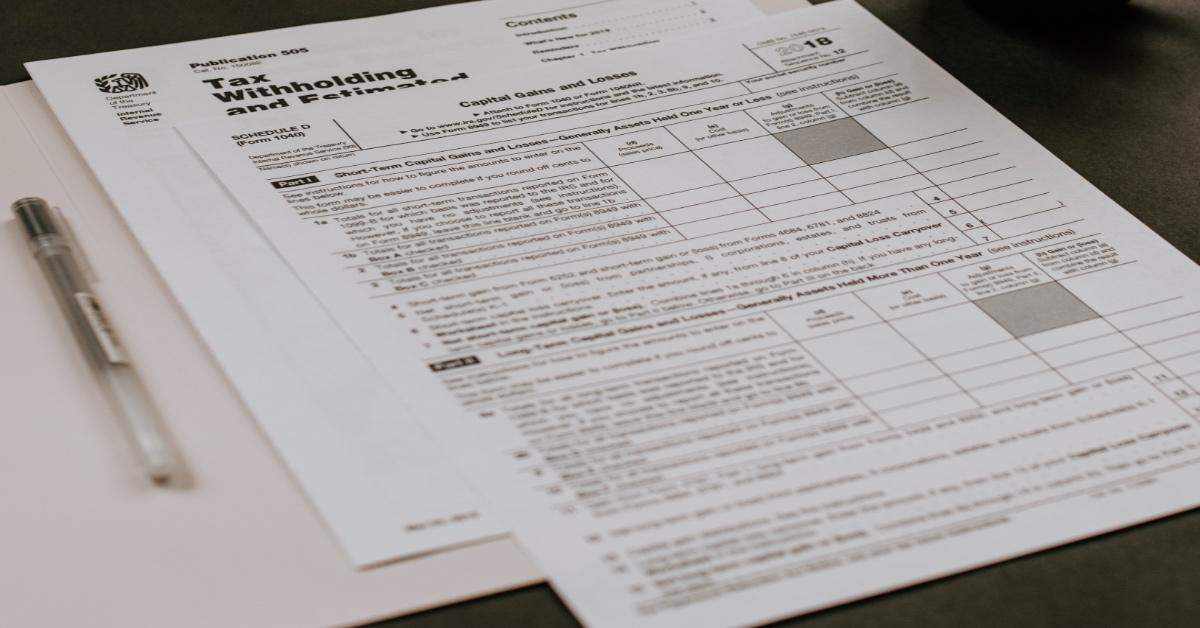Want to Know How Much You’ll Get Back in Taxes in 2022? Here Are Some New Credits You May Collect
The 2021 American Rescue Plan Act called for the issuance of new and larger tax credits. These will reduce taxable income and increase refunds for the 2021 tax filing year.
Oct. 27 2021, Published 1:51 p.m. ET

Your income, employment status and tax withholding play a large role in determining whether you will collect a refund or owe money to the government when filing your 2021 income tax return. Deductions and tax credits also weigh heavily in determining how much of your income will be taxed and whether you’ll be entitled to a refund.
The Biden administration passed a number of laws that may qualify you to receive a bigger tax refund next year. We've outlined the tax credits being offered for the 2021 year below, which may help you estimate how much of your taxes paid you'll see in your refund in 2022.
Tax credits you can advantage of when filing your 2021 tax return

1. The Advance Child Tax Credit (CTC)
The CTC has gained a considerable amount of media attention even before it was issued under the American Rescue Plan Act (ARPA) in March 2021. In fact, many TikTok users focus their content solely around the CTC. The CTC allows parents of children under the age of 17 to collect a refund, even those who don’t pay taxes.
Parents with children between the ages of six and 17 are eligible to collect up to $3,000 per child while those with children under the age of six are eligible to receive up to $3,600. Beginning July 15, the IRS began issuing half of these amounts in the form of monthly payments to eligible parties.
The IRS is issuing up to $250 for children between the ages of 6 and 17 and up to $300 for children under the age of 6. The other half of the credit is scheduled to be issued when you file your 2022 tax return. Therefore, if you have children under the age of six, you’ll receive up to $1,800 per child, or up to $1,500 for each child that is between the ages of six and 17.
If you didn't opt-out of receiving the monthly CTC, the IRS likely issued your payment via direct deposit with the account you have on file or by mail. If you had a child in 2021, you’re entitled to collect the full $3,600 when you file your 2021 tax return.
2. Earned Income Credit (EITC)
The EITC is provided to individuals earning a lower income. Your credit is based on your earnings and the number of children you have. For example, when filing your 2021 taxes with one child, your income must not exceed $42,158 when selecting Single, Head of Household, Widowed, or Married Filing Separately as your filing status.
The income limit increases to $48,108 if you file your 2021 tax return as Married Filing Jointly. If you’re eligible to receive the EITC, these are the maximum amounts you can receive, according to TaxSlayer:
- $534 when filing with no qualifying children
- $3,618 with one qualifying child
- $5,980 with two qualifying children
- $6,728 with three or more qualifying children
3. Child and Dependent Care Credit
ARPA expanded the child and dependent care credit—a credit that differs from the CTC—by increasing the amount you can collect for children under the age of 13 or a qualifying adult. If you incur certain expenses to help care for a qualifying child or adult, you may be entitled to a tax credit of up to $4,000 for one person, and $8,000 for two or more people.
This credit can help offset your taxable income, thereby reducing the amount you have to pay or entitling you to a credit. If your adjusted gross income is over $438,000, you are not eligible to receive this credit.
Other tax breaks offered for the 2021 filing year

ARPA certainly amped up the number of available tax credits when filing your 2021 income tax return. In addition to these new tax credits, there are plenty of pre-existing tax breaks you may also qualify for. Some include:
- Deducting qualifying business expenses
- Education credits and deductions
- Individual retirement arrangement (IRA) deductions
A tax professional can help you identify the tax credits and deductions you qualify for. They can also calculate how much you’ll owe to the IRS or what you’ll be entitled to receive in the form of a refund.
